Get 10% Off*, Use Code: HPDS25
Get 10% Off*, Use Code: HPDS25

Urinary incontinence is a common phenomena that might affect women mostly during the old age or during menopause. Though this statement is not applicable to all women, according to research and medical surveys, a huge percentage of women have complained about suffering from urinary incontinence once in their lifetime, especially during menopause.
Urinary incontinence is the inability of the body to retain urine properly and discharge small amounts of it involuntarily from the body. There are a number of treatment and preventive measures one can take while tackling the problem of urinary incontinence. Women though, have to take a number of other precautions as well, since menopause can cause further complications while treating urinary incontinence.
Bladder control problems or urinary incontinence are common for women going through their menopause. After your menstrual cycle ends, your body stops making the female hormone estrogen. We know that estrogen controls the menstrual cycle and the changes during pregnancy, but the unknown fact is that it also helps in keeping the lining of the bladder and the urethra healthy. As women age, many factors can weaken the pelvic floor muscles that are responsible for the bladder control resulting in urinary incontinence. This includes some damage that might have occurred during pregnancy, childbirth, or even if you gain weight due to menopause.
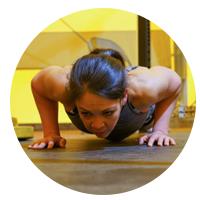
The pelvic floor muscles in your abdominal region, help you hold your urine. Urine may leak if the muscles get weak. This can happen from pregnancy, prostate surgery, or excessive weight. But we can strengthen the muscles to improve the symptoms. The exercises that strengthen these muscles are called Kegel exercises. We should get into the habit of doing them daily, about every 2 waking hours. They can stop leakage or significantly prevent it. Kegel exercises can also help if you have a sudden urge to urinate. By relaxing and contracting the muscles very quickly we can control this urge. Many times, that will remove the sensation of urgency.
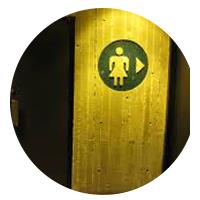
Speaking in layman’s terms, if your bladder is empty you might not leak. Urinating before you have the urge can avoid accidental leakages. For example, if you get the urge to urinate every 3 hours, go to the bathroom after every 2 ½ hours. If you visit the bathroom too often, then try to increase the amount of time between the visits. Combine this practice, called bladder training, with pelvic floor exercises for good results.
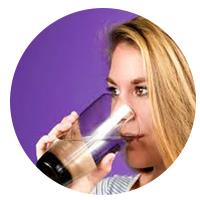
Leakage accidents are more likely to occur when your bladder is full. If you drink a lot of liquid, even water, you might feel an urgent need to urinate. Limit the amount of caffeine and alcohol, as they produce more urine. Drink 6 to 8 glasses of liquid per day. Drastically reduce the amount of liquid consumption after 4 p.m. if you experience leaks overnight. But do drink throughout the day as not drinking will still result in your body making urine, but it will be concentrated and will thus irritate the lining of your bladder. That can cause more of an urge than in the other cases.

Heavy or extra weight can lead to leaks because it pressurizes the bladder or the urethra, which is the tube leading from the bladder. This is mostly related to stress incontinence and leaks from coughing, laughing, sneezing, or lifting. According to research, women who are heavier tend to have more problems, and weight loss sometimes can help improve the condition.
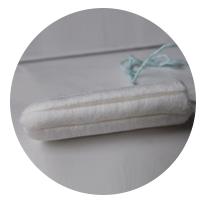
Technology has enabled us to use devices that can be worn to prevent leakages. Placing support in the vagina may help prevent leaks. Your doctor might fit you with a soft silicone device called a pessary. Or she might suggest you to use a tampon to reduce leaks. Doctors often recommend tampons for women who just leak when they go running. You don't want to wear a tampon all the time, but it's convenient for an activity like this. Remember that you should use no more than 2 tampons a day and change your tampon every 6 hours to prevent toxic shock syndrome.
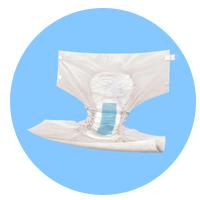
One can always choose from a wide range of undergarments that are made to control incontinence. These undergarments are hidden perfectly under your clothing and hence can be carried around or worn easily whenever one needs them. You can choose from types like belted undergarments, beltless undergarments, cloth like briefs, stretch style briefs, pads for urinary incontinence, etc. You can also opt for protective underwear that are super absorbent and prevent leaking. All these products are sensitive to the skin. Even though these product offer proper skin care, sometimes, due to leakage or other conditions, infections or rashes can be a common phenomena. Using skin care products such as lotions, creams, and powders can help you get rid of these issues easily.
Disclaimer: All content found on our website, including images, videos, infographics and text were created solely for informational purposes. Our content should never be used for the purpose of diagnosis or treatment of any medical conditions. Content shared on our websites is not meant to be used as a substitute for advice from a certified medical professional. Reliance on the information provided on our website as a basis for patient treatment is solely at your own risk. We urge all our customers to always consult a physician or a certified medical professional before trying or using a new medical product.

Taikhum Sadiq has been a Health Products For You contributor since 2016.
He is an archaeology student and is passionate about learning about the past and how it impacts our future. He believes ...
How To Increase Iron Levels Quickly
It’s a question that must have puzzled you like many others. Iron is essential in hemoglobin production and its inadequate levels can negatively impact your health. Dive into this informative article to explore top iron-rich foods that can help you fight iron deficiency.
10 Best Coccyx Cushions for Tailbone Pain
If you're like most people, you spend about 8 to 10 hours sitting every day. However unhealthy, it is part of life for many, and can cause tailbone pain. Coccyx cushions can help alleviate this pain. Click to read more and find the perfect coccyx cushion for your tailbone pain.
5+ Best Adult Diapers for Fecal Incontinence
Dealing with fecal incontinence can be challenging, but you're not alone. Read this article and navigate through discreet and effective solutions that help you manage fecal incontinence and let you live life on your terms with confidence and comfort.
Top 5 Best Reviewed Nebulizers of 2024
Need an effective and affordable nebulizer? Look no further, in this article we offer 5 of our best reviewed nebulizers that are loved by our customers. Click to read more and find the perfect nebulizer for all your respiratory needs.
10 Best Penis Pumps For Erectile Dysfunction
For anyone dealing with erectile dysfunction, penis pumps serve as a great way to manage it. But with so many products available, determining the best one for your needs can be challenging. To assist you in refining your choices and making an informed decision, here are our top 10 options, recognized for their effectiveness and safety.